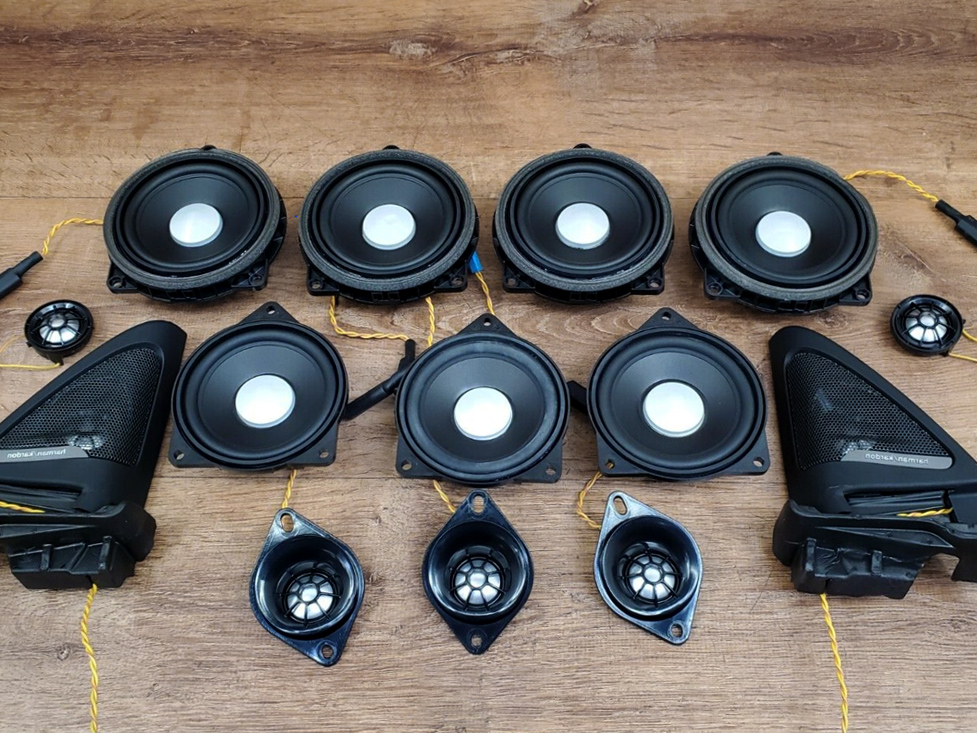The overall luxury experience. The careful placement and use of high-quality materials in a high-end audio and entertainment system can create an immersive and all-encompassing sound experience that envelops the driver and passengers. Most people don’t require that many speakers and a high-quality four-speaker to eight-speaker system that can be just as good as a 16 or more arrangement, or is it?
Some of the most well-known luxury car brands that offer high-end sound systems with 20 or more speakers include Tesla, Porsche, and Mercedes-Benz. These companies have created sound systems that are not only high-quality but also integrate seamlessly into the car’s overall design.It’s worth noting that having a high-end sound system with 20, 24 or more speakers is not just about the number of speakers. It’s about the science behind the design, the type of speaker used, and the careful placement of each speaker to create the best possible sound experience. In a 24-speaker system, each speaker is likely to be a high-end model made from materials such as Kevlar or carbon fiber, known for their excellent sound reproduction and durability as well as efficiency. Car makers fight throughout their supply chain to achieve the highest quality at the lowest possible cost. This means less weight, more power, less energy consumption, more comfort, less used space and a juggling experience between all of those features as well as a showdown between design, engineering, purchasing, manufacturing and other areas within any given car company. The most speakers used in a production car is currently the 64-speaker sound system found in a Mercedes-Maybach S-Class. The system is made by Burmester and is called the Burmester High-End 4D Surround Sound System. It uses a combination of mid-range speakers, tweeters, and subwoofers to create a fully immersive sound experience. The system also features 4D sound, which uses special algorithms to make the sound seem like it’s coming from all around the user.

In comparison, most vehicles below a price tag of, let’s say around 15.000 usd or older models only have six speakers, on average. While a 24-speaker system may seem superior, it’s vital to keep in mind that not everyone requires or desires a high-end sound system since part of what these systems are aimed for is to reproduce, amplify or diminish certain noises caused by the car on the road itself. This could be rolling noise, some unwanted vibrations of the powertrain and transmission as well as the exaggeration of the “good” engine noises. This has actually replaced the need for big exhaust pipes and high-flow air filters.
For those who value other aspects in their automobile more than audio, a six-speaker system usually is a more practical alternative that can nevertheless deliver high-quality sound, as long as the system itself is of proper quality. This means the head unit, alongside with the car’s battery, wiring and quality of speakers are up to the task of one’s ears.
To accompany this, there’s acoustic insulation, made by different plastic and foam densities, which help to round up the desirable wavelengths of the audio spectrum. A consideration here, though, is the amount of time you’re willing to give to this endeavor since installation process may be rather lengthy.

The number of speakers in a car’s sound system is not just about sound quality but also a reflection of one’s status and taste. Luxury car brands such as Tesla, Porsche, and Mercedes-Benz offer high-end sound systems with 16 or more speakers, carefully designed and placed to create an immersive and all-encompassing sound experience. However, not all cars require that many speakers, and a high-quality six to eight-speaker system can be just as good.
Ultimately, the number of speakers in a car’s sound system depends on personal preference and the manufacturer’s commitment to providing the best in luxury and technology. A good rule of thumb will be to cover the three ranges of frequencies and a minimum of isolation from external vibrations, especially the low end spectrum, is desirable. Talking about the optimal position for the listener, high frequencies will fade in faster, so they’ll be closer to one’s ears but not so much that this will damage one’s eardrums;; mid frequencies can travel longer distances but need enough space to bounce so they provide rich sound, and lastly, low frequencies need a good amount of material to resonate.